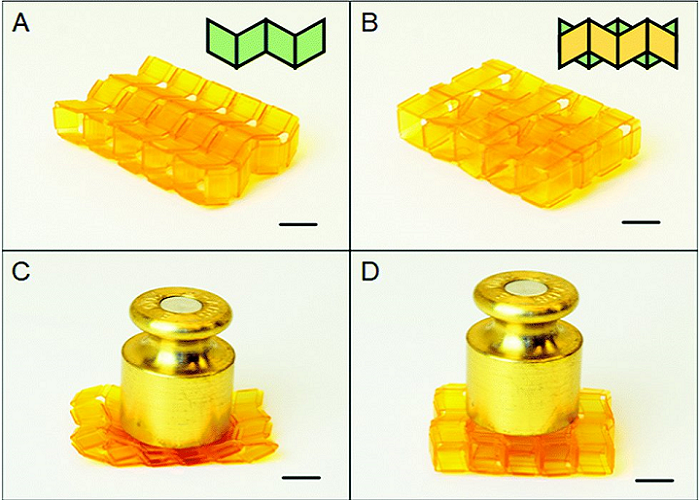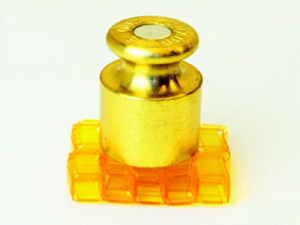Beijing researchers are exploring better ways to qualify ion optics, fabricating molybdenum components via additive manufacturing. Their findings were published recently in ‘3D Printed molybdenum for grids and keeper electrodes in ion thruster.
The main parts of ion thrusters are ion optics and the keeper, with optics playing a main role in the geometry of the engine. Their erosion, however, is what restricts the longevity of ion thrusters. The keeper is meant to protect the hollow cathode from ‘ion bombardment,’ causing the cathode discharge to switch on, with both metal and materials made from carbon normally used to create the necessary electrodes. Molybdenum is a common metal material used for ion optics and keeper manufacturing.

Inside of the build chamber of an SLM machine, with the fabrication piston (left), to which a build plate has been attached, and the powder delivery piston (right), on which metallic powder has been spread. The printing process starts when all the powder that is needed is loaded on the powder delivery piston, its surface flattened and aligned with the build plate on the fabrication piston.
“Among carbon-based materials, whose (Coefficient of Thermal Expansion) CTE is nearly zero and whose sputtering yield is lower than that of molybdenum, graphite is the conventional option due to its affordability and the high understanding of the industry about its fabrication methods, although pyrolytic graphite and carbon-carbon composite have also been used on several occasions for ion optics installed on significant thrusters,” state the researchers.
To streamline manufacturing of ion optics, the Beijing Institute of Technology performed a study, centered around 3D printing molybdenum for electric thrusters’ parts. It was successful and is still in development, having produced several healthy electrodes sets so far. The researchers chose selective laser melting (SLM) for the project, mainly due to its capabilities in metal printing—but also due to the level of accuracy offered, and especially for aerospace applications. Common metal materials used are titanium, aluminum, and stainless steel.
A research project at BIT created several 3D printed ion optics previously in titanium, to further examine the Additively Manufactured Ion Optics concept. Another study measured energy density, regarding:
- Laser power
- Laser scanning speed
- Hatch spacing
- Layer thickness
Molybdenum components were printed via SLM, with the research carrying on as they decided to use the materials for ion optics for mounting on ion sources in the lab, to be tested.
“Several sets of screen and accelerator grids were printed on different fabrication processes and the outputs were studied in order to verify that the SLM equipment was able to produce optics of the desired thickness and to position correctly the aperture array. The grids were examined, and it was found that they met design requirements,” stated the authors.
3D printing of the keepers is still in the development phase, although the researchers state that ‘no challenges have appeared so far.’ The researchers state that because neither the optics nor keeper are ‘especially demanded components,’ it is not necessary that the SLM molybdenum offer the same mechanical properties that they would expect from solid metal.

Four sets of screen and accelerator grids alongside several cubic samples at the end of the SLM fabrication process. After the manufacturing is completed, the components are surrounded by unsintered powder that will be removed and used for the next process.
“It was shown that both mechanical and thermal properties of SLM molybdenum approach those of the solid metal when the energy densities applied during the fabrication process get close to the maximum energy density to produce the refractory material, that is, for values about 300Jmm-3. This fact is related to the porosity of the output, which reduces as energy density increases,” concluded the researchers. “The sputtering erosion behavior of selectively laser melted materials has not been assessed yet, but it should be studied before additively manufactured components can qualify for real electric propulsion applications.”
3D printing in aerospace applications is growing more common today, as organizations like NASA develop new materials and processes, new engine alloys, and even robotics. What do you think of this news? Let us know your thoughts! Join the discussion of this and other 3D printing topics at 3DPrintBoard.com.

Effect of the bias of the scanning system over the lower region of the
build plate. The grids allocated on the lower part of the plate presented burned regions due to the excessive energy supplied by the laser.
[Source / Images: ‘3D Printed molybdenum for grids and keeper electrodes in ion thruster’]
The post Beijing: 3D Printing Molybdenum Ion Thruster Components appeared first on 3DPrint.com | The Voice of 3D Printing / Additive Manufacturing.



